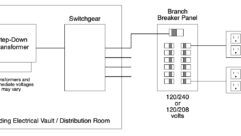Reasons For Change
At a recent gathering of industry leaders hosted by the National Systems Contractors Association (NSCA), the trends affecting our industry were examined so that the organization could plan its future.
An industry that’s not in transition is probably dead. Recognizing change and adapting to it is the survival tactic that promotes evolution. Just like individuals, trade organizations must evolve in order to meet the needs of its members in a changing industry. At a recent gathering of industry leaders hosted by the National Systems Contractors Association (NSCA), the trends affecting our industry were examined so that the organization could plan its future. One idea that received much discussion was that NSCA should increase representation from other constituencies within our industry. At present, board representation is limited to systems integration companies. Is it time to open it up to consultants, manufacturers, sales representatives, architects, and specifying engineers — the various groups that have a stake in the future of our industry? Personally, I don’t think so.
Twenty years ago, NSCA was the National Sound Contractors Association, and the focus was on promoting the business of its membership. Recognizing the need to expand beyond just sound (because its members did), the name of the organization was changed to National Systems Contractors Association — but still the focus was on promoting the business of its “systems contractor” members.
Making NSCA a group composed of multiple constituents with diverging points of views, interests, and trends isn’t a bad idea. But it can dilute the efforts of fulfilling the essential needs of its core group —and that’s a bad idea. Most systems contractors need the help.
Compared to many industries, our companies are small — less than $5 million annual revenues with fewer than 20 employees, according to Pro AV’s research. On their own, these organizations can’t afford the research, training, tools, and outreach that NSCA membership affords them.
In research alone, NSCA provides an annual financial analysis allowing contractors to compare their P&Ls with other like-sized companies. There’s a wage and compensation survey, labor installation standards, and quarterly “intelligence briefings” that provide recommendations for operating within various vertical markets. Imagine how these projects would change — or disappear completely — if they needed to include a voice for multiple constituents.
NSCA’s “Essentials of Systems Integration CD” gives members 400 industry standard forms and agreements to use to make their businesses more efficient. How could this be done if it had to include engineers, sales reps, manufactures, consultants, and architects?
I’m not saying there isn’t a place at NSCA for other stakeholders. But making them members of equal weight in the organization will completely change what NSCA offers systems contractors.
Our industry has evolved from hobbyists, ex-musicians, and AV enthusiasts to professional business managers and technicians. NSCA has played a role in that evolution for more than 20 years, and any direction that drifts from that would be premature and detrimental to our industry.
Mark Mayfield
Editor










